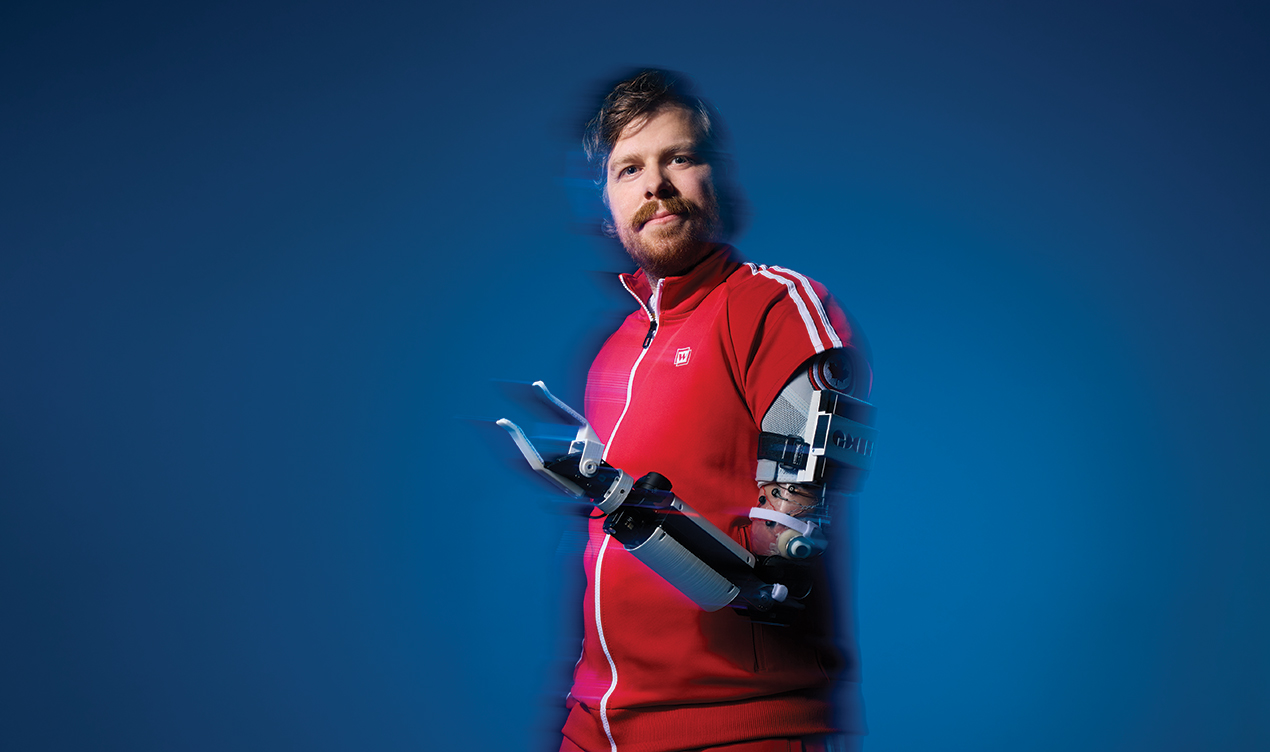Patrick Pilarski’s first passion was science fiction. Books like William Gibson’s Neuromancer sparked a childhood curiosity with artificial intelligence and cybernetic augmentation, which may have tangentially inspired his second passion: physiology.
He discovered this in a sports medicine program in his Stony Plain high school. The teenager became fascinated by the nature of the human body — and how to help it recover from injury and illness. “Back in the ’90s I was thinking, ‘Wouldn’t it be cool to build robotics to augment human abilities?” he says. “Fast forward … and I’m doing that exact thing.”
Since 2014, Pilarski has co-led the University of Alberta’s BLINC Lab — or Bionic Limbs for Improved Natural Control — where they research, design and test cutting edge bionic limbs for people who need them. Some patient research partners, like Chris Neilson, who lost his arm in a mining accident, have worked with the lab for over a decade. Along with co-leader Dr. Jacqueline Hebert, a clinician at the Glenrose Rehabilitation Hospital and professor of medicine at the University of Alberta, Pilarski works with research participants to improve the lab’s technology, while also collaborating with student researchers to develop and troubleshoot the technologies.
Though prosthetics have existed since at least ancient Egypt, and robotic prostheses have been commonly used since the 1960s, BLINC prosthetics use artificial intelligence to behave more like a living limb, intuitively adapting to the rhythms of life. “Since time immemorial, humans have integrated tools into their daily lives,” says Pilarski, likening their advanced tech to hammers and arrows. “And now, because of this rapid technological change in sensors, actuators, computing technologies, machine learning technologies, something different has happened. We can now think about our prostheses as collaborators in living lives.”
Since its foundation in 2014, the BLINC lab has explored some wackier possibilities, including an extendable, “go-go gadget” forearm prostheses, and a wearable third arm that comes out of the chest. As silly (or nightmarish) as these sound, their limitless imagination has led the lab to innovative places. Equipped with everything from 3D printers and augmented reality gear — and staffed by researchers from diverse fields — the lab is transforming what is possible with prosthetics.
